Technology

5 min

Augmented reality in retail helps brands drive sales and reduce returns by transforming how customers discover, try, and buy products. This blog is your guide to using AR strategically, from choosing the right use cases to launching cost-effective AR experiences that delight customers and differentiate your brand.

By Sannidhya Sharma
03 Jul, 2025
Ever tried buying something online and spending hours to figure out how it would actually look? Let’s be fair, retail has tremendously changed in the last few years. The customers of today’s age are ones who love to shop online and swipe credit cards like it’s an everyday ritual, maybe because they expect more than just shelves and product tags.
What used to feel ‘super futuristic’ such as trying on sunglasses from the comfort of your home or visualizing a bed in your room, is now, quite literally, just one tap away. These aren’t just gimmicks; they’re part of new technology trends that are actively reshaping the way we shop. And it is quite apparent that those brands which are leaning into this shift are seeing more engagement, fewer returns, and a whole lot of ‘shocking’ experiences from its customers.
In this blog, we will guide you through the augmented reality for retail journey, starting from lifting customer engagement down to directly boosting sales. We’ll break down the benefits, share real-world examples, and show you how to actually get started with AR in retail without burning your whole tech budget.
If there’s one thing that retailers have learnt in this past decade is that they cannot afford to be boring, or for that matter, monotonous. Today, customers have endless options, zero patience for errors, and extremely high expectations for digital experiences even when they’re physically visiting a retail store.
So, why is AR becoming such a big deal in the retail scene? It is because it helps brands tackle some of the most common and costly challenges head-on.
Here’s what today’s retail landscape looks like:
Foot traffic is highly unpredictable. People browse online before even considering walking into a store.
Online shopping lacks context. It’s hard to know if a certain product will match your needs, and this goes for almost every industry.
It is extremely common to see product returns. Especially in fashion and furniture where “what you see” isn’t always “what you get.”
Customers want interaction, not just information. Static product photos don’t cut it anymore.
This is the perfect scenario for Augmented Reality in supermarkets to be considered as a practical solution.
With AR, you can:
Here are some real-world examples showing how AR is reshaping retail, both online and in-store:

This is probably the most familiar use case, and for good reason, because it has shown that it works.
Warby Parker lets customers try on glasses using their cameras. The app scans their faces and overlays frames in real time, helping customers choose the perfect one without ever having to visit a store.
Sephora’s Virtual Artist uses facial mapping to let users try on different shades of lipstick, eyeshadow, or foundation. It avoided messy testers and awkward lighting, while making way for instant feedback. This kind of interactivity removes hesitation and speeds up the path to purchase.
Trying to imagine how a product will look in your space? AR can literally show you the same.
For high-involvement products, this kind of visualization boosts confidence and reduces buyer’s remorse.
AR isn’t only for online businesses. Smart retailers are using it inside stores to make shopping more immersive.

This adds another layer of utility to in-store visits, which can increase the time they spend visiting, and also expand their basket size.
Sometimes AR is less about utility and more about creating a moment.
This is AR and VR in fashion retail when used for delight, something retailers often forget in the rush to optimize.
It does not come out as a surprise that attracting and keeping a customer attentive and focused has become a hard task. Human behavior dictates that people scroll more, tap more, and bounce even more when nothing can grasp their interest immediately. This is why AR can be a great tool of engagement as it turns passive scrolling into active browsing.
When they engage with AR features, customers don't see a product anymore, they are experiencing the product. It is just like when an idea becomes a concept and you can literally see it be created. Whether shopping online and visualizing shoes, seeing how a table would look in your lounge, or touching a product in the store to give you more information, AR encourages you to play, customize and engage. It is way beyond the engagement capabilities of a mere product photo.
Besides, AR evokes the feeling of newness and pleasure. It makes your customers spend more time in your app, website or even in your retail store. The longer they visit you for, the higher the chances of purchasing or recommending, or at least recalling your brand. That type of stickiness is more precious than gold in a world where attention is a currency.
Social ripple-effect is also a factor to consider. Most of the AR is designed to be shared, whether that is a selfie in virtual sunglasses or a 3D layout of a room you are working on. Such organic sharing travels quickly to increase not only engagement, but brand awareness as well. There are also instances when customers turn out to be micro-influencers without even being aware of this fact.
Fundamentally, augmented reality in retail can be viewed as more than a fancy feature; it is a strategic opportunity in evolving the shopping experience into a personal, emotional, fun, and significant one that people tend to revisit.
While AR is a wonderful tool to capture attention, it’s not just about making shopping fun, it’s also about increasing sales in a measurable way. By helping customers feel more confident and safe in their choices, AR directly removes hesitation, improves conversion rates, and even cuts down on returns, something that is a huge cost center for most retailers.
Here’s how AR helps close the sale:
In a competitive market, where tiny improvements in conversion can lead to significant revenue gains, augmented reality in retail market can give you a serious advantage.
The first step is defining what you want AR to do for your business. Are you looking to reduce returns? Drive more in-store traffic? Or simply create a unique mobile shopping experience? Knowing the result you’re shooting for will help you decide what kind of virtual reality in retail stores are best suited for you, whether it’s virtual try-ons, 3D product views, or an in-store experience.
Next up, think about where AR will go. Do you want it to be implemented into your existing app or e-commerce site? Or would a WebAR experience, something users can access via a simple link or QR code, be better? Both approaches have their advantages, and it often comes down to your target audience and how they typically shop.
At this stage, partnering with the right tech team makes a huge difference. A digital product studio, like us at Quokka Labs, a custom mobile app development company, can help you scope, prototype, and launch an AR experience that’s not just cool but also aligns with your goals, technical architecture, and budget. We always recommend starting with a focused MVP, a minimum viable product that solves one specific customer problem well. Once it’s live, you can test, gather feedback, and scale from there.
Want to know how AR can work for your brand? Let’s get started.
One of the first things to consider is device compatibility. Not all customers are using the latest smartphones or browsers, which means your AR solution needs to be optimized for different hardware and platforms. WebAR might help you with accessibility, but even that has its limitations depending on the use case.
Then there’s the user experience design. AR VR development services should feel natural and helpful, not clunky or forced. If users have to jump through too many hoops just to try on a product or see it in their space, they’re likely to go away. The experience needs to load fast, respond accurately, and offer real value in seconds, not minutes.
Other common challenges include:
If the AR trends continue to scale in the same fashion, AR in retail will shift from being a “nice-to-have” to becoming non-negotiable. As the technology matures and becomes more accessible, it becomes more important to reshape our architecture in a way that people expect to shop.
The integration of AR with AI and personalization is one of the biggest changes that are already emerging. Think about a time when you walk in a store, or scrolling on your phone, rather than only seeing what a product can do, you also start to get suggestions about a particular fashion, color, or size, based on what you have responded to in the past, your track record, or even your physique.
Since we are moving to the future, the use of glasses and headset-like AR devices is expected to go further. Rather than visualizing a product through your phone, users can just stare and read the price, the supply, styling tips, and so on in live time, in their range of vision using those headsets or glasses.
It might sound futuristic now, but that kind of seamless, “ambient retail” experience isn’t as far off as it seems.
Ultimately, the future of virtual reality in retail is all about invisible convenience and visible value. It’s about giving customers tools that are intuitive, responsive, and actually useful, so much so that they don’t even think of it as astounding; they just see it as the new normal.
Now that you are here, you truly understand one thing: AR in retail isn’t just a one-time trend, it’s a powerful tool for making shopping more engaging, personal, and of course, profitable. Whether it’s helping customers try before they buy, bringing products to life, or making in-store visits more interactive, augmented reality in retail adds real value where it matters most.
And you don’t need to go big from day one. Start small. Focus on one product line, one user journey, or one store location. Measure what works and then build from there with the assistance of a custom mobile app development company. That’s how innovation becomes impactful.
At Quokka Labs, we help brands turn digital possibilities into business realities using AR VR development services. If you’re ready to explore what AR could look like for your retail experience, whether online, offline, or a mix of both, we’d love to chat.
Let’s build something your customers won’t just use but also remember!
Generative AI Tech Stacks: Choosing the Right Tools for Scalable AI Development
By Dhruv Joshi
5 min read
Choosing Best Tech Stack for Web App Development: Performance, Cost, and Scalability
By Dhruv Joshi
5 min read
Top 9 Tech Stacks for Scalable Web Application Development
By Dhruv Joshi
5 min read
Generative AI Implementation Strategy: From Concept to Deployment (Step-by-Step Guide)
By Sannidhya Sharma
5 min read

Technology

7 min
Generative AI is moving fast into enterprises, from banks to hospitals to government agencies. Adoption is rapid, but security planning lags. Unlike traditional systems, these models can be exploited through prompt injection, poisoned data, or manipulated to leak sensitive information. They are also misused for phishing, deepfakes, and malicious code.


Technology

7 min
AI-powered Web Application Firewalls (WAFs) go beyond static rules by using machine learning, anomaly detection, and predictive analysis to block zero-day threats, reduce false positives, and protect APIs at scale. Unlike traditional WAFs, they self-learn, adapt in real time, and cut operational costs while improving compliance and trust.


Technology

5 min
AI is redefining mobile app security by transforming how threats are detected, tested, and prevented. From continuous monitoring and fraud detection to compliance with regulations, AI ensures apps remain resilient against modern risks. This means safer apps, protected users, and stronger businesses. Investing in AI-driven security today builds trust, drives growth, and secures long-term competitive advantage.


Feeling lost!! Book a slot and get answers to all your industry-relevant doubts